Are you struggling with stiff muscles and limited flexibility? Incorporating yoga into your routine could be the solution you need. Yoga is not just about achieving inner peace; it’s also a fantastic way to enhance your flexibility and overall physical health. In fact, research has shown that practicing yoga regularly can increase flexibility by up to 35% over a period of 8 weeks. In this post, we will explore some of the most effective yoga poses for flexibility.
These poses are designed to target tight muscles and improve your range of motion, making everyday movements easier and more comfortable. Whether you’re a seasoned yogi or a complete beginner, these poses will help you achieve greater flexibility and feel more at ease in your body.
You’ll learn about poses like the Downward-Facing Dog, which stretches the hamstrings and calves, and the Pigeon Pose, which is excellent for opening up the hips. We’ll also cover tips on how to perform these poses correctly to avoid injury and maximize their benefits.
By integrating these effective yoga poses for flexibility into your fitness routine, you’ll not only improve your flexibility but also enhance your overall well-being. So, let’s dive into these powerful poses and start your journey towards a more flexible and agile body.
Table of Contents
Importance of Flexibility in Overall Health and Wellness
Flexibility is a crucial component of overall health and wellness. It enhances your body’s ability to move freely and comfortably, reducing the risk of injuries and improving physical performance. Flexibility helps maintain a full range of motion in the joints, which is essential for performing everyday activities with ease. As we age, maintaining flexibility becomes even more important to prevent stiffness and maintain mobility.
How Yoga Enhances Flexibility
Yoga is one of the most effective practices for enhancing flexibility. Unlike other forms of exercise that focus on building strength or endurance, yoga combines stretching and strengthening exercises that gradually increase your flexibility. The practice involves holding poses that stretch various muscle groups, encouraging them to lengthen and relax. Consistent yoga practice helps to loosen tight muscles and connective tissues, promoting greater flexibility.
Benefits of Incorporating Yoga into Daily Routines
Integrating yoga into your daily routine offers numerous benefits beyond just improved flexibility. Here are some key advantages:
- Improved Range of Motion: Regular yoga practice enhances the range of motion in your joints, making it easier to perform everyday tasks and reducing the risk of injuries.
- Reduced Muscle Tension: Yoga helps to relieve muscle tension and soreness, promoting relaxation and reducing stress levels.
- Better Posture: Many yoga poses strengthen the core and back muscles, leading to better posture and alignment. Good posture reduces the risk of chronic pain and injuries associated with poor alignment.
- Enhanced Physical Performance: Greater flexibility can improve your overall physical performance in various activities, whether it’s sports, dancing, or simply moving around more efficiently.
- Stress Relief and Relaxation: Yoga incorporates breathing exercises and meditation, which help to calm the mind and reduce stress. This holistic approach benefits both your mental and physical well-being
Benefits of Yoga for Flexibility
Practicing yoga regularly offers a wealth of benefits, especially when it comes to improving flexibility. Here’s a closer look at how yoga can transform your body and enhance your overall well-being.
Improved Range of Motion
One of the most significant benefits of yoga for flexibility is the improved range of motion. Yoga poses gently stretch your muscles and joints, helping to increase their flexibility and mobility. This makes everyday movements easier and more comfortable. Whether you’re reaching for something on a high shelf or bending down to tie your shoes, a greater range of motion can make these tasks effortless.
Reduced Risk of Injuries
Yoga helps to reduce the risk of injuries by promoting better body mechanics and alignment. Flexible muscles are less likely to be strained or pulled during physical activities. Additionally, the balance and coordination developed through yoga practice contribute to fewer falls and accidents. Incorporating yoga into your routine is an excellent way to safeguard your body against common injuries.
Enhanced Physical Performance
Another key benefit is the enhanced physical performance that comes with improved flexibility. Athletes and fitness enthusiasts often find that yoga helps them perform better in their respective sports or exercises. Flexible muscles work more efficiently, allowing for better movement and endurance. Whether you’re running, swimming, or playing a sport, yoga can give you that extra edge.
Better Posture and Alignment
Good posture is essential for overall health, and yoga plays a crucial role in achieving it. Many yoga poses focus on strengthening the core and back muscles, which are vital for maintaining proper posture. Improved posture not only looks better but also reduces the risk of developing chronic pain and injuries associated with poor alignment. Yoga encourages you to stand taller, sit straighter, and move with greater confidence.
Relief from Muscle Tension and Soreness
Muscle tension and soreness can be significant barriers to daily comfort and productivity. Yoga offers a gentle and effective way to relieve this tension. The stretching and lengthening of muscles during yoga practice help to release built-up stress and tension. This results in a feeling of relaxation and well-being, making it easier to tackle your day with ease and comfort.
Best Yoga Poses for Increasing Flexibility
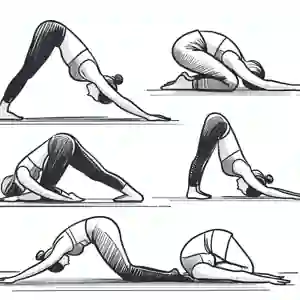
Incorporating yoga into your daily routine is a fantastic way to enhance your flexibility. Here’s an overview of some of the best yoga poses for increasing flexibility, known for their effectiveness and ease of practice.The Best Yoga Poses for Flexibility
Downward Dog (Adho Mukha Svanasana)
Downward Dog is a staple in many yoga practices and is incredibly effective for increasing flexibility. This pose stretches the hamstrings, calves, and shoulders. To perform Downward Dog, start on your hands and knees, tuck your toes under, and lift your hips towards the ceiling, forming an inverted V shape. Keep your hands shoulder-width apart and your feet hip-width apart. This pose not only improves flexibility but also strengthens the arms and legs.
Child’s Pose (Balasana)
Child’s Pose is a gentle stretch that targets the hips, thighs, and ankles. It’s a resting pose that allows you to focus on your breath and release tension. To get into Child’s Pose, kneel on the floor, touch your big toes together, and sit back on your heels. Extend your arms forward on the floor with palms down, lowering your torso between your knees. This pose is perfect for beginners and helps to calm the mind while stretching the body.
Forward Fold (Uttanasana)
Forward Fold is excellent for stretching the hamstrings, calves, and lower back. This pose also helps to relieve stress and calm the mind. To perform Forward Fold, stand with your feet hip-width apart, inhale, and lengthen your spine. As you exhale, hinge at your hips and fold forward, allowing your head and arms to hang down. Keep your knees slightly bent if needed. Regular practice of this pose can significantly improve flexibility in the legs and back.
Cat-Cow Stretch (Marjaryasana-Bitilasana)
The Cat-Cow Stretch is a dynamic flow between two poses that stretches and mobilizes the spine and neck. It’s great for warming up the body and increasing flexibility in the back. To do this stretch, start on your hands and knees in a tabletop position. Inhale as you drop your belly towards the mat and lift your gaze (Cow Pose), then exhale as you round your spine towards the ceiling and tuck your chin to your chest (Cat Pose). This stretch helps to improve spinal flexibility and relieve tension in the back.
Yoga Poses to Improve Flexibility for Beginners
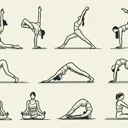
Yoga is a wonderful practice for enhancing flexibility, and it’s accessible to everyone, regardless of experience level. If you’re new to yoga, here are some beginner-friendly poses that will help you improve your flexibility step-by-step.12 Yoga Poses for Flexibility
Mountain Pose (Tadasana)
Mountain Pose is the foundation of all standing poses and is excellent for beginners. This pose helps to improve posture and balance, setting the stage for more advanced stretches. To perform Mountain Pose:
- Stand with your feet together and arms at your sides.
- Distribute your weight evenly across both feet.
- Engage your thighs and lift your kneecaps slightly.
- Lengthen your spine, reaching the crown of your head towards the ceiling.
- Keep your shoulders relaxed and your arms hanging naturally.
Mountain Pose helps you develop a strong, aligned foundation and prepares your body for deeper stretches.
Standing Forward Bend (Uttanasana)
Standing Forward Bend is a simple yet effective pose for stretching the hamstrings, calves, and lower back. Here’s how to do it:
- Stand with your feet hip-width apart.
- Inhale and lengthen your spine, reaching your arms overhead.
- Exhale and hinge at your hips, folding forward.
- Allow your head and neck to relax as you reach towards the floor.
- Bend your knees slightly if needed to avoid straining your lower back.
Regular practice of Standing Forward Bend will increase your flexibility in the legs and back, making daily movements easier.
Seated Forward Bend (Paschimottanasana)
Seated Forward Bend is perfect for stretching the hamstrings and spine. It also helps to calm the mind and relieve stress. Follow these steps:
- Sit on the floor with your legs extended straight in front of you.
- Flex your feet and engage your thighs.
- Inhale and lengthen your spine, reaching your arms overhead.
- Exhale and hinge at your hips, reaching towards your feet.
- Keep your back straight and avoid rounding your shoulders.
Seated Forward Bend is a gentle yet powerful stretch that gradually increases flexibility in the legs and back.
Bridge Pose (Setu Bandhasana)
Bridge Pose is an excellent pose for stretching the chest, neck, and spine while also strengthening the back muscles. Here’s how to do it:
- Lie on your back with your knees bent and feet flat on the floor, hip-width apart.
- Place your arms at your sides with palms facing down.
- Press into your feet and lift your hips towards the ceiling.
- Clasp your hands under your back and extend through your arms.
- Hold the pose, breathing deeply, then release and lower your hips back to the floor.
Bridge Pose is a wonderful beginner pose that opens the chest and shoulders while strengthening and stretching the back.
Advanced Yoga Poses for Flexibility and Strength
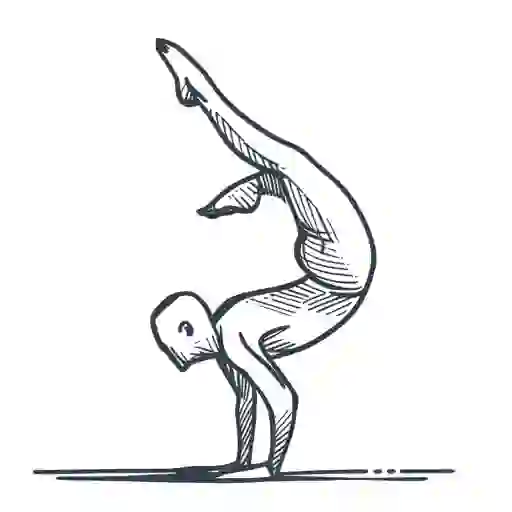
For those looking to take their practice to the next level, advanced yoga poses offer an exciting challenge that enhances both flexibility and strength. These poses require a combination of balance, endurance, and muscle control, pushing your body to new limits. Here’s a detailed guide on how to safely practice some of the most effective advanced yoga poses.
Wheel Pose (Urdhva Dhanurasana)
Wheel Pose is a powerful backbend that opens up the chest, shoulders, and hip flexors while strengthening the arms and legs. Here’s how to practice it safely:
- Lie on your back with your knees bent and feet flat on the floor, hip-width apart.
- Place your hands beside your ears with your fingers pointing towards your shoulders.
- Press into your hands and feet, lifting your hips and chest off the ground.
- Straighten your arms and legs as much as possible, bringing your body into a full arch.
- Hold the pose for a few breaths, then carefully lower yourself back down.
Wheel Pose enhances flexibility in the spine and shoulders while building strength in the upper body and legs.
King Pigeon Pose (Kapotasana)
King Pigeon Pose is a deep backbend and hip opener that requires significant flexibility and strength. Here’s how to do it:
- Begin in a kneeling position with your thighs perpendicular to the floor.
- Place your hands on your lower back for support and begin to lean back.
- Reach your hands towards your feet, grabbing your ankles or soles.
- Press your hips forward and lift your chest, deepening the backbend.
- Hold the pose for a few breaths, then slowly release.
King Pigeon Pose stretches the entire front body, including the thighs, groin, and abdomen, while strengthening the back muscles.
Full Splits (Hanumanasana)
Full Splits is an impressive pose that stretches the hamstrings, hip flexors, and groin. To practice Full Splits safely:
- Start in a low lunge position with your right foot forward and left knee on the ground.
- Gradually slide your right foot forward and your left foot back, straightening both legs.
- Keep your hips square and lower your torso towards the floor.
- Use your hands for support on either side of your body.
- Hold the pose, breathing deeply, then switch sides.
Full Splits requires patience and consistent practice but significantly improves flexibility in the legs and hips.
Scorpion Pose (Vrschikasana)
Scorpion Pose is a challenging inversion that combines balance, strength, and flexibility. Here’s how to practice it:
- Begin in a forearm stand with your forearms on the ground and elbows shoulder-width apart.
- Lift your legs into the air, coming into a forearm balance.
- Bend your knees and arch your back, bringing your feet towards your head.
- Focus on engaging your core and maintaining balance.
- Hold the pose for a few breaths, then carefully come out of the inversion.
Scorpion Pose deeply stretches the chest and spine while building strength in the shoulders, arms, and core.
Yoga Poses for Hip and Hamstring Flexibility
Importance of Hip and Hamstring Flexibility for Overall Mobility
Flexibility in the hips and hamstrings is crucial for maintaining overall mobility and preventing injuries. Tight hips and hamstrings can lead to discomfort and limit your range of motion, affecting daily activities like walking, bending, and sitting. By incorporating targeted yoga poses into your routine, you can enhance flexibility, improve posture, and reduce muscle tension.
Pigeon Pose (Eka Pada Rajakapotasana)
Pigeon Pose is a deep hip opener that stretches the hip flexors, glutes, and lower back. Here’s how to practice it:
- Start in a tabletop position on your hands and knees.
- Bring your right knee forward towards your right wrist, placing your shin on the mat.
- Extend your left leg straight back behind you.
- Lower your hips towards the mat, keeping your hips square.
- Hold the pose for several breaths, then switch sides.
Benefits: Pigeon Pose helps to release tension in the hips, increase hip flexibility, and alleviate lower back pain.
Wide-Legged Forward Bend (Prasarita Padottanasana)
Wide-Legged Forward Bend is excellent for stretching the hamstrings, inner thighs, and lower back. Follow these steps to perform the pose:
- Stand with your feet wide apart, toes slightly turned in.
- Inhale and lengthen your spine, placing your hands on your hips.
- Exhale and hinge at your hips, folding forward.
- Place your hands on the floor, in line with your shoulders.
- Hold the pose, breathing deeply, then slowly rise back up.
Benefits: This pose increases flexibility in the hamstrings and inner thighs, improves circulation, and calms the mind.
Lizard Pose (Utthan Pristhasana)
Lizard Pose is a powerful hip opener that targets the hip flexors, groin, and hamstrings. Here’s how to practice it:
- Start in a low lunge with your right foot forward and left knee on the ground.
- Place your hands on the inside of your right foot.
- Lower your forearms to the ground if possible, or stay on your hands for a milder stretch.
- Keep your back leg extended and engage your core.
- Hold the pose, then switch sides.
Benefits: Lizard Pose enhances hip flexibility, stretches the hamstrings, and strengthens the legs and core.
Reclining Hand-to-Big-Toe Pose (Supta Padangusthasana)
Reclining Hand-to-Big-Toe Pose is a gentle stretch for the hamstrings and hips. Here’s how to do it:
- Lie on your back with your legs extended.
- Lift your right leg towards the ceiling, keeping it straight.
- Hold your big toe with your right hand, or use a strap around your foot if needed.
- Keep your left leg grounded and your hips square.
- Hold the pose, then switch sides.
Benefits: This pose improves hamstring flexibility, relieves lower back tension, and enhances overall leg mobility
Effective Yoga Stretches for Flexibility in the Spine
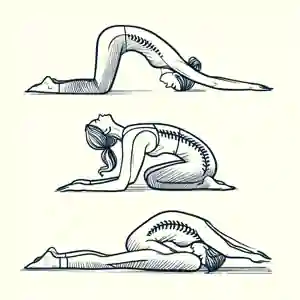
Benefits of Spinal Flexibility for Posture and Back Health
Maintaining spinal flexibility is crucial for overall posture and back health. A flexible spine supports better posture, reduces the risk of back pain, and enhances your ability to move freely. Spinal flexibility helps to keep the vertebrae healthy, prevents stiffness, and promotes a greater range of motion, which is essential for everyday activities. Incorporating yoga stretches into your routine can significantly improve spinal flexibility and contribute to overall well-being.
Cat-Cow Pose (Marjaryasana-Bitilasana)
Cat-Cow Pose is a gentle flow between two poses that warm up the spine and improve its flexibility. Here’s how to practice it:
- Start on your hands and knees in a tabletop position, with your wrists aligned under your shoulders and your knees under your hips.
- Inhale, arch your back, and lift your head and tailbone towards the ceiling (Cow Pose).
- Exhale, round your spine, tuck your chin to your chest, and draw your belly button towards your spine (Cat Pose).
- Continue to flow between Cat and Cow for several breaths, moving with your breath.
Benefits: This pose increases spinal flexibility, promotes better posture, and relieves tension in the back and neck.
Cobra Pose (Bhujangasana)
Cobra Pose is an effective backbend that stretches the spine and opens the chest. Here’s how to do it:
- Lie face down on the mat with your legs extended and the tops of your feet pressing into the floor.
- Place your hands under your shoulders, elbows close to your body.
- Inhale and gently lift your chest off the floor, using your back muscles while keeping your elbows slightly bent.
- Press your shoulders away from your ears and hold the pose for a few breaths.
- Exhale and lower your chest back to the floor.
Benefits: Cobra Pose improves spinal flexibility, strengthens the back muscles, and opens the chest, enhancing respiratory function.
Seated Spinal Twist (Ardha Matsyendrasana)
Seated Spinal Twist is a deep stretch that improves flexibility in the spine and stimulates the digestive system. Follow these steps:
- Sit on the floor with your legs extended.
- Bend your right knee and place your right foot on the outside of your left thigh.
- Inhale and lengthen your spine.
- Exhale and twist to the right, placing your left elbow on the outside of your right knee and your right hand behind you for support.
- Hold the pose for a few breaths, then switch sides.
Benefits: This pose increases spinal flexibility, improves digestion, and relieves tension in the back and shoulders.
Fish Pose (Matsyasana)
Fish Pose is a backbend that stretches the spine, chest, and shoulders. Here’s how to practice it:
- Lie on your back with your legs extended and your arms by your sides.
- Place your hands under your hips, palms down.
- Inhale and lift your chest towards the ceiling, arching your back.
- Allow the top of your head to gently rest on the floor, keeping your throat open.
- Hold the pose for a few breaths, then slowly release and lower your chest back to the floor.
Benefits: Fish Pose enhances spinal flexibility, opens the chest and throat, and promotes better posture.
Morning Yoga Routine for Flexibility and Energy
Importance of Starting the Day with Yoga for Flexibility and Energy
Starting your day with yoga is an excellent way to boost your flexibility and energy levels. Morning yoga routines help wake up your body, stretch out stiff muscles, and set a positive tone for the day ahead. Practicing yoga in the morning increases blood flow, enhances mental clarity, and provides a natural energy boost. Incorporating yoga into your morning routine can help you stay flexible, focused, and energized throughout the day.
Sample Morning Yoga Routine with Detailed Instructions
Here’s a sample morning yoga routine designed to improve flexibility and invigorate your body:
Sun Salutations (Surya Namaskar)
Sun Salutations are a series of poses performed in a flow, perfect for warming up your body and increasing flexibility. Here’s how to do them:
- Mountain Pose (Tadasana): Stand tall with your feet together and arms by your sides. Inhale and reach your arms overhead.
- Forward Fold (Uttanasana): Exhale and fold forward, bringing your hands to the floor or your shins.
- Halfway Lift (Ardha Uttanasana): Inhale, lift your torso halfway, and extend your spine.
- Plank Pose: Exhale and step back into a plank position, keeping your body in a straight line.
- Chaturanga Dandasana: Lower your body halfway down, keeping your elbows close to your sides.
- Upward Dog (Urdhva Mukha Svanasana): Inhale and lift your chest, straightening your arms and keeping your thighs off the floor.
- Downward Dog (Adho Mukha Svanasana): Exhale and lift your hips, forming an inverted V shape.
- Forward Fold (Uttanasana): Step or hop forward, inhale halfway, and exhale to fold.
- Mountain Pose (Tadasana): Inhale and rise up, bringing your arms overhead, then exhale to release.
Benefits: Sun Salutations increase flexibility, improve circulation, and energize the body.
Cat-Cow Stretch (Marjaryasana-Bitilasana)
The Cat-Cow Stretch is a gentle flow that warms up the spine and improves flexibility. Here’s how to do it:
- Start on your hands and knees in a tabletop position.
- Cow Pose: Inhale, drop your belly towards the mat, lift your gaze and tailbone.
- Cat Pose: Exhale, round your spine towards the ceiling, tuck your chin to your chest.
- Repeat the flow for several breaths.
Benefits: This stretch increases spinal flexibility, improves posture, and relieves tension.
Downward Dog (Adho Mukha Svanasana)
Downward Dog is a foundational pose that stretches the entire body. Here’s how to perform it:
- Start on your hands and knees.
- Tuck your toes under and lift your hips towards the ceiling, forming an inverted V shape.
- Keep your hands shoulder-width apart and your feet hip-width apart.
- Press your heels towards the floor and engage your core.
Benefits: Downward Dog stretches the hamstrings, calves, and shoulders, increases flexibility, and boosts circulation.
Standing Forward Bend (Uttanasana)
Standing Forward Bend is a simple yet effective pose for stretching the hamstrings and back. Here’s how to do it:
- Stand with your feet hip-width apart.
- Inhale, lengthen your spine, and reach your arms overhead.
- Exhale, hinge at your hips, and fold forward, bringing your hands to the floor or your shins.
- Relax your head and neck, and hold the pose for a few breaths.
Benefits: This pose increases flexibility in the hamstrings and back, relieves tension, and calms the mind.
Advanced Yoga Poses for Tight Muscles
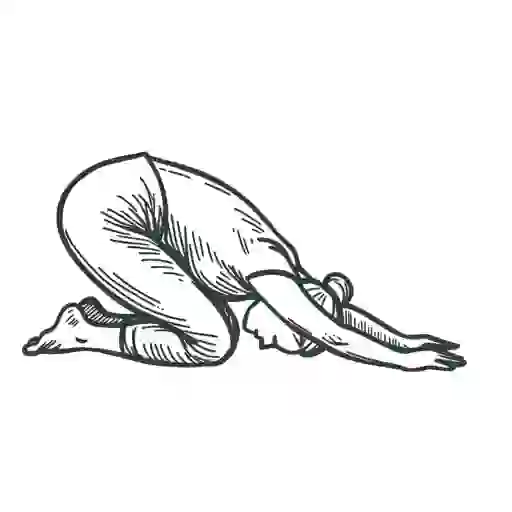
Common Areas Where Muscles Get Tight
Muscle tightness can occur in various parts of the body, often due to poor posture, lack of movement, or overuse. Common areas where muscles tend to get tight include the hips, lower back, hamstrings, and inner thighs. Tight muscles can lead to discomfort, limited range of motion, and increased risk of injury. Incorporating yoga poses specifically designed to target these areas can help alleviate tension and improve flexibility.
Reclining Pigeon Pose (Supta Kapotasana)
Reclining Pigeon Pose is an excellent stretch for the hips and lower back. Here’s how to perform it:
- Lie on your back with your knees bent and feet flat on the floor.
- Cross your right ankle over your left thigh, just above the knee.
- Hold the back of your left thigh and gently pull it towards your chest.
- Keep your right knee open and hold the pose for a few breaths.
- Switch sides and repeat.
Benefits: This pose targets the hip flexors and glutes, helping to release tension and improve flexibility in the hips and lower back.
Happy Baby Pose (Ananda Balasana)
Happy Baby Pose is a gentle stretch that opens the hips and relaxes the lower back. Follow these steps:
- Lie on your back and bring your knees towards your chest.
- Hold the outer edges of your feet with your hands.
- Open your knees wider than your torso and bring them towards your armpits.
- Flex your feet and press them into your hands, creating resistance.
- Hold the pose for several breaths, gently rocking from side to side if desired.
Benefits: This pose stretches the inner thighs, groin, and lower back, promoting relaxation and flexibility.
Legs-Up-the-Wall Pose (Viparita Karani)
Legs-Up-the-Wall Pose is a restorative pose that stretches the hamstrings and relieves lower back tension. Here’s how to do it:
- Sit with one side of your body against a wall.
- Swing your legs up the wall as you lower your upper body to the floor.
- Adjust your position so your hips are close to the wall and your legs are straight up.
- Rest your arms by your sides and relax in the pose for several minutes.
Benefits: This pose gently stretches the hamstrings, relieves lower back pain, and promotes circulation.
Butterfly Pose (Baddha Konasana)
Butterfly Pose is a classic stretch for the inner thighs and hips. Here’s how to perform it:
- Sit on the floor with your legs extended.
- Bend your knees and bring the soles of your feet together, allowing your knees to drop out to the sides.
- Hold your feet with your hands and gently press your knees towards the floor.
- Lengthen your spine and hold the pose for several breaths.
Benefits: This pose stretches the inner thighs and hips, improves flexibility, and helps to open the groin area.
Conclusion
Practicing yoga regularly offers numerous benefits, especially when it comes to enhancing flexibility. Improved flexibility not only increases your range of motion but also helps reduce the risk of injuries, relieves muscle tension, and enhances overall physical performance. Yoga is a holistic practice that improves posture, strengthens muscles, and promotes relaxation. By incorporating these effective yoga poses into your daily routine, you can experience these incredible benefits firsthand.
Recap of the Benefits of Practicing Yoga for Flexibility
To recap, here are the key benefits of incorporating yoga into your routine for flexibility:
- Improved Range of Motion: Regular yoga practice helps to increase flexibility in your joints and muscles, making everyday movements easier and more comfortable.
- Reduced Risk of Injuries: Flexible muscles are less prone to strains and injuries. Yoga promotes better body mechanics and balance, further reducing injury risks.
- Enhanced Physical Performance: Greater flexibility allows your body to move more efficiently, improving performance in various physical activities.
- Better Posture and Alignment: Many yoga poses strengthen the core and back muscles, which are essential for maintaining good posture and alignment.
- Relief from Muscle Tension and Soreness: Yoga stretches and lengthens muscles, helping to release tension and reduce soreness.
Encourage Readers to Incorporate These Poses into Their Daily Routine
Incorporating these yoga poses for flexibility into your daily routine doesn’t require a lot of time or equipment. Whether you’re a beginner or an advanced practitioner, these poses can be adapted to fit your level of experience. Start with a few poses each day, gradually increasing the duration and intensity as your flexibility improves. Consistency is key to seeing the benefits, so make yoga a regular part of your day.

